Self-Similar and Strange, Wolfgang Spahn
Strange Attractors, 2019
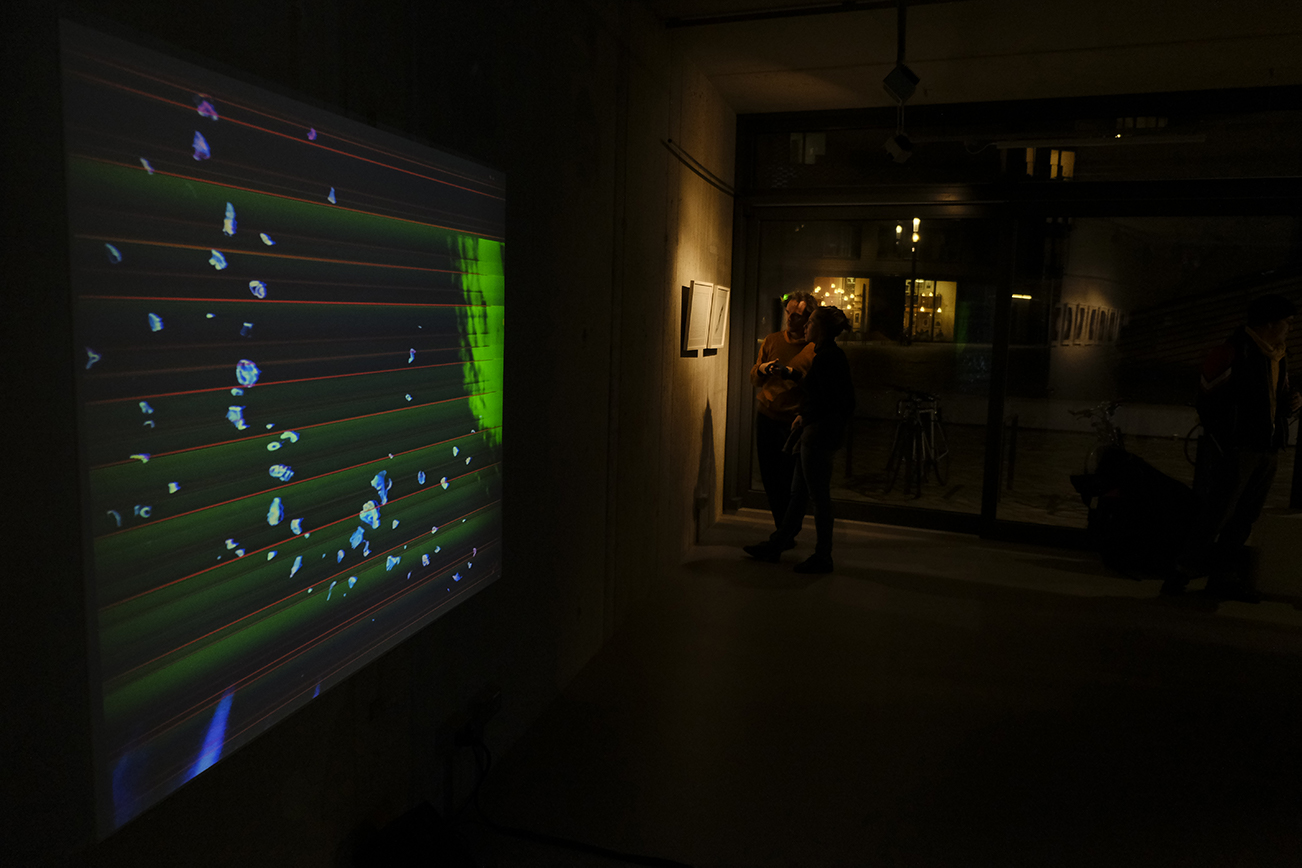
Courtesy Art Claims Impulse
a Lorenz System controlled by an other Lorenz System, 2019
Ever since the mathematician Benoit Mandelbrot geometrically described structures in nature as ‘self-similar systems’ in „How Long Is the Coast of Britain? Statistical Self-Similarity and Fractional Dimension“ a paper published in 1967, fractal structures have remained a subject of artistic enquiry. Strange attractors in their quality of chaotic fractals constitute together with self-similar structures an important part of chaos research, and feature as core and lead theme of the installation.

Courtesy Art Claims Impulse
„Strange Attractors“ is about a generative system for sound and projections based on the analogue computer Confetti (developed by the artist) that calculates these Strange Attractors.
„Strange Attractors” rises the question if climate can be predicted, described by Julia Slingo, and Tim Palmer in Uncertainty in weather and climate prediction.
The title of the work refers to the mathematical term of the same name (David Ruelle / Floris Takens, 1971) borrowed from chaos theory which describes physical laws of chaotic behaviour in dynamic processes. Based on strange attractors it’s possible to for instance to mathematically describe turbulent currents of liquids or gases that cannot otherwise by analytically captured due to their complexity and level of randomness. In the installation two Lorenz Attractors are used to generate the sound as well as the visuals.

Courtesy Art Claims Impulse
The work raised the question of the artistic definition of boundaries in a space which in fact is determined by coincidence. Strange attractors are defined among others by the fact that they always establish a limiting framework or an according order within which the actual chaos can take place. This means that – at least from a mathematical perspective – haphazardness and chaos are enabled by a framework that creates an order, because without this framework any conceivable chaotic system would rise ad infinitum, and by doing so would escape observation and description. If this thought were transferred to art, it would mean that artistically created chaotic systems would not be visible or audible. Accordingly, the installation raises the question whether the artists themselves create the framework that creates the order, allowing the work to emerge ‘haphazardly’.
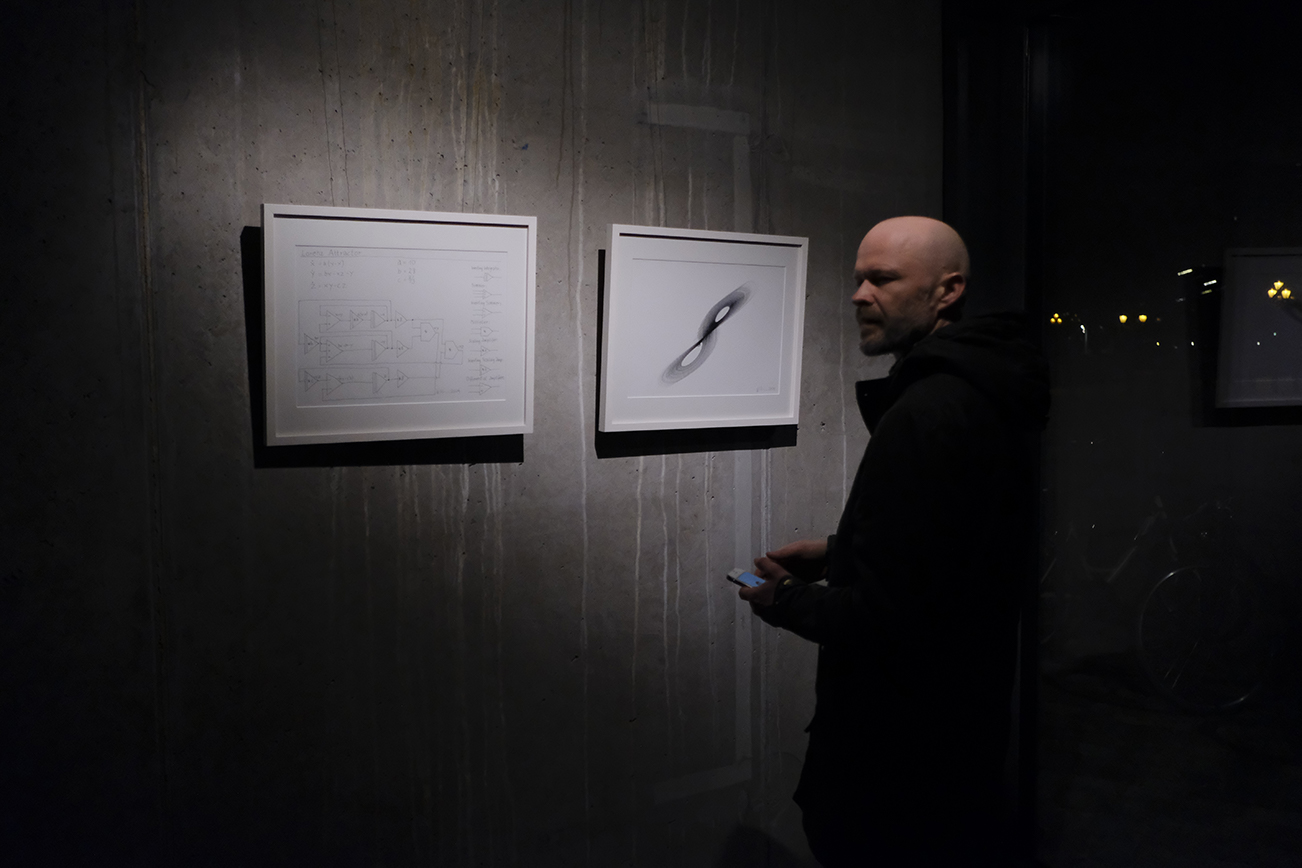
Courtesy Art Claims Impulse
The work was show in the exhibition “Self-Similar and Strange” at Art Claims Impulse in Berlin, 2019.
The Artwork is avaible in the ACI-Shop.
Its organic if you have a closer look, 2017.
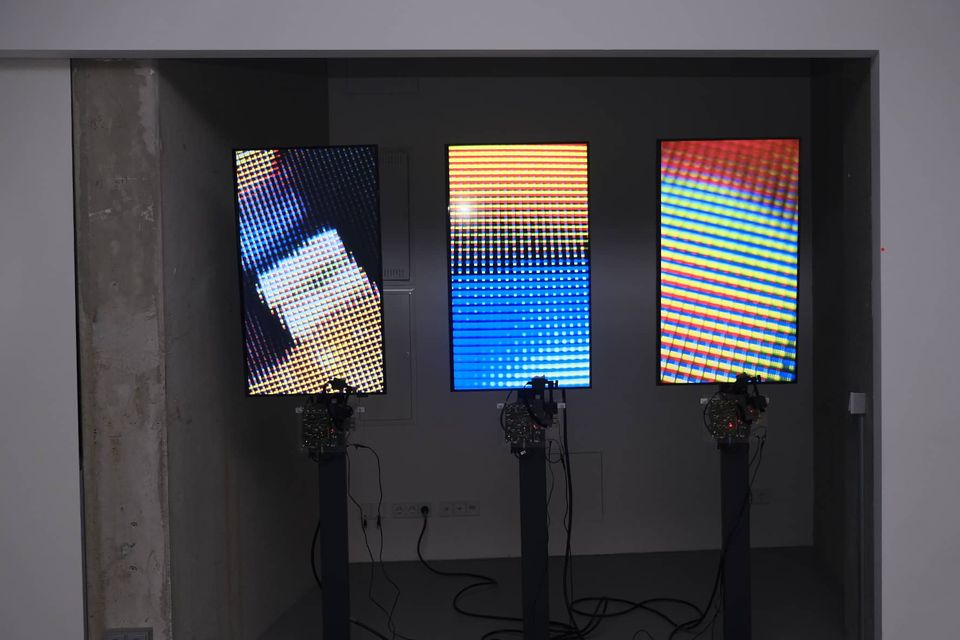
Courtesy Art Claims Impulse
The audio-video installation It's Organic If You Look Close Enough by artist Wolfgang Spahn aims to deconstruct the so-called perfect surface created in the virtual sphere by contemporary digital technology. By exploring the surface of OLED monitors through macro film, the camera makes visible the frayed edges of the Organic Light Emitting Diodes (OLEDs). This creates images that would not be visible to the naked eye: The supposedly homogeneous perfect squares are actually uniquely shaped, frayed and uneven when approached with the macro lens.
A triptych of three OLED monitors, each equipped with a Raspberry Pi camera, shows patterns created and re-created by macro-films of the frayed pixels. Thus, each monitor is both source and display of the patterns generated in an endless feedback loop. These patterns are manifold, as macrofilms magnify their objects, performatively generating changes in terms of structure, color, and dimension of the images.
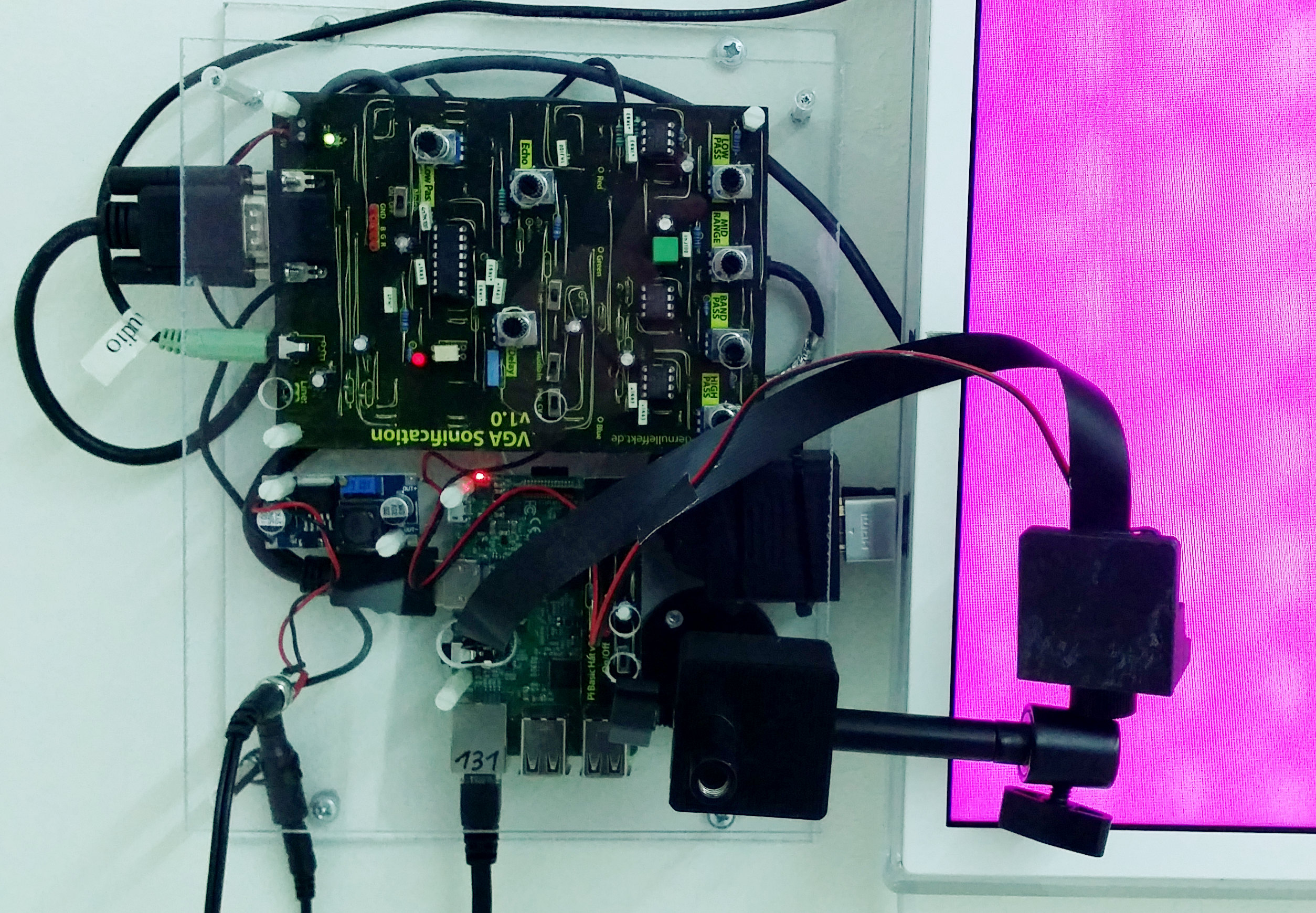
Courtesy of the Artist
In this respect, the installation speaks both to the organic structure of OLEDs and to the analog technology that is part of the digital interfaces. In doing so, it creates disillusionment: the purely digital surface can only exist as an abstract reality within the virtual sphere. The moment digital data is made accessible - whether through the use of monitors, cameras, or any technology that allows data to be stored, shared, or visualized - the pure digital surface is interrupted by the hardware of the interfaces, which always contains analog technology.
Nevertheless, the installation also includes virtual space. The VGA (Video Graphics Array) input signals of the OLED monitors are tracked and their audio amplified and streamed. In this respect, the imprecise sound resulting from the organic images will be publicly available in the virtual space. The sonification of the data can be understood as interference: organic material interferes with the perfect surface of the abstract virtual sphere.
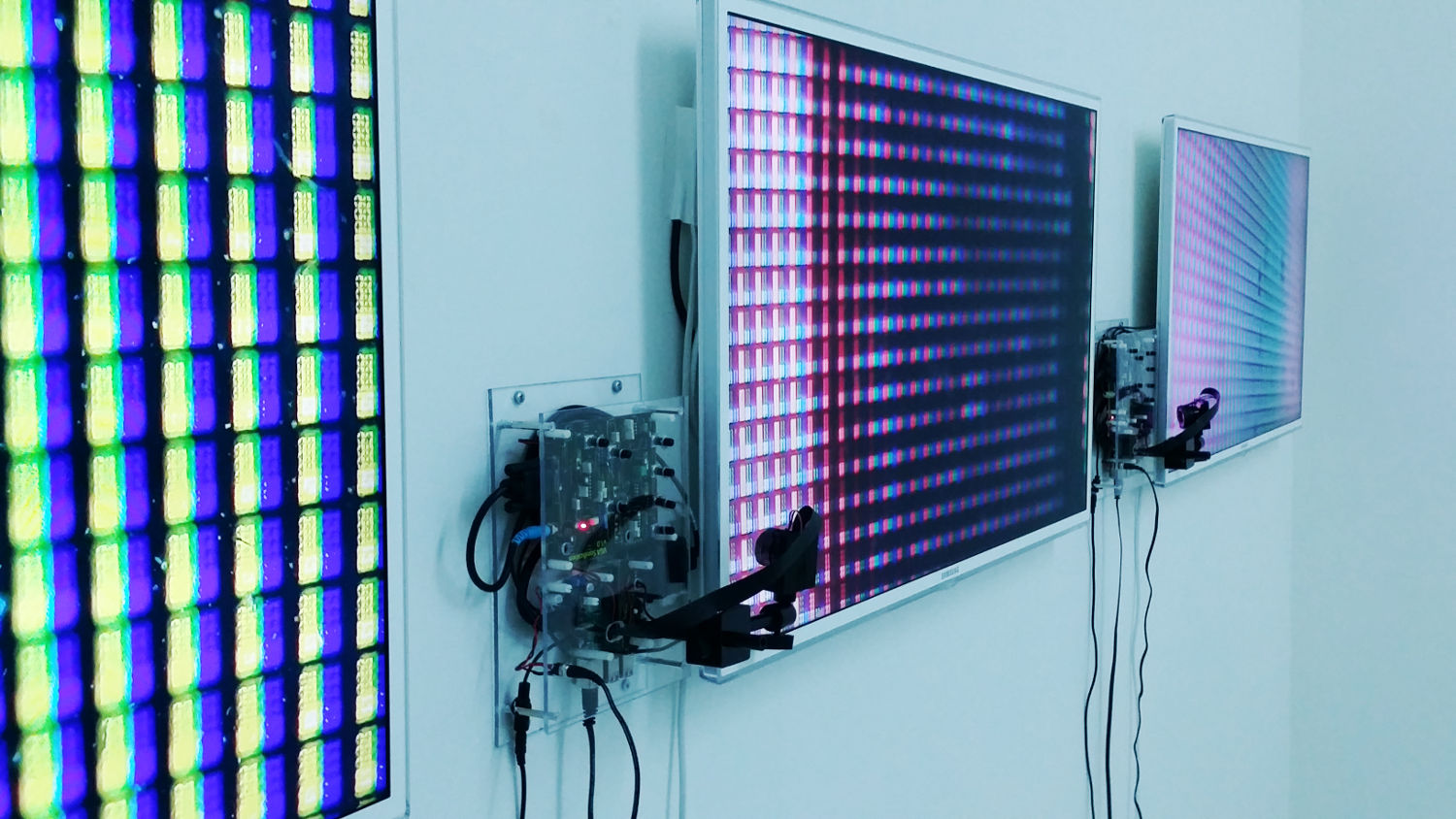
Courtesy of the Artist
The Artwork is avaible in the ACI-Shop.